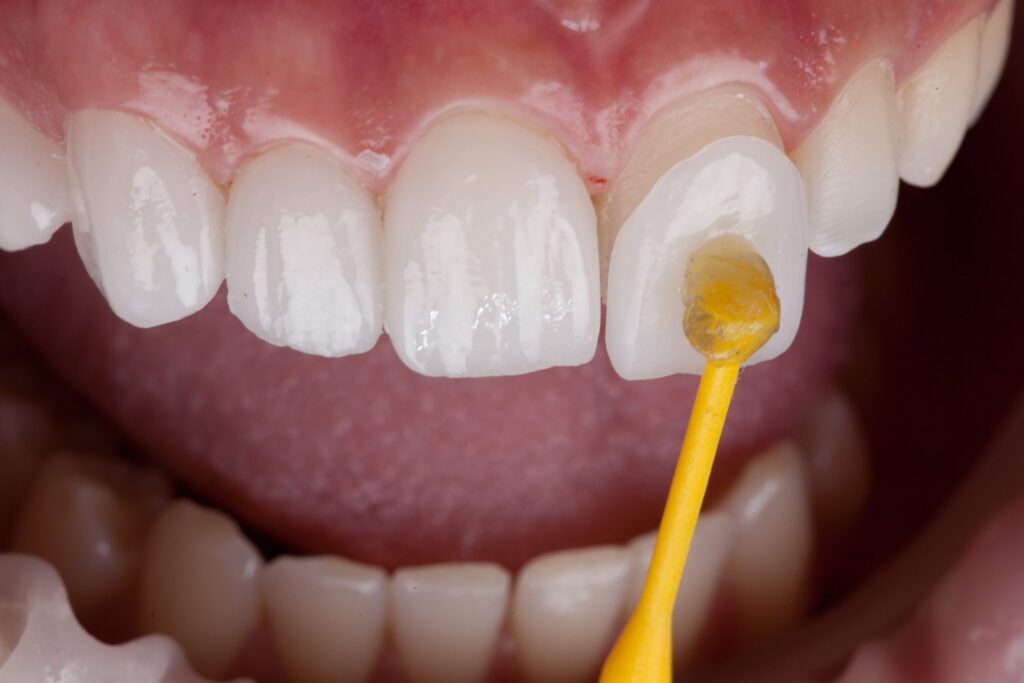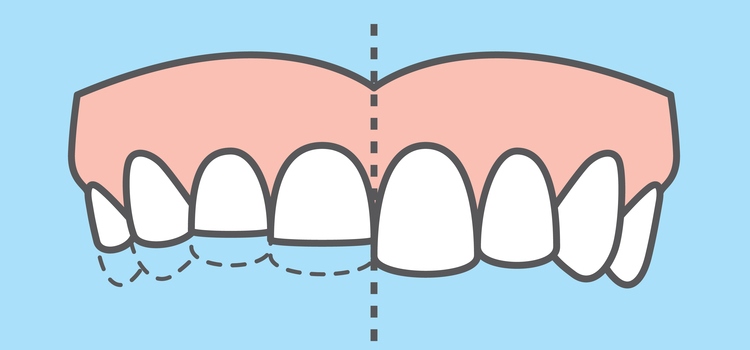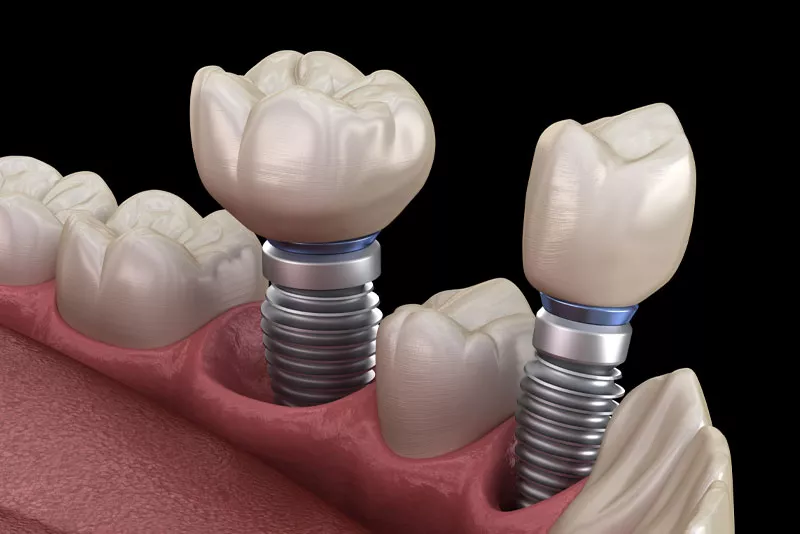
Are you suffering from dental issues and are considering a cosmetic dental procedure to improve the appearance of your smile? A beautiful smile is a sign of confidence and can make a big difference in how you feel about yourself.
Thankfully, modern dentistry have made available many different procedures that you can undergo to enhance the appearance of your teeth and achieve the smile you have always wanted. However, you may be feeling overwhelmed by the different options available to you.
Two popular treatments that can dramatically enhance your teeth and boost your confidence are teeth bonding and veneers. While both procedures aim to address common dental concerns such as chipped, discolored, or misaligned teeth, they differ in terms of materials, process, longevity, and cost.
To help you make an informed decision and achieve the smile you’ve always wanted, we’ve put together a comprehensive guide comparing teeth bonding and veneers. In the rest of this article, we will take a deep dive into the key differences and similarities between these two dental treatments and provide expert insights to help you choose the right solution for your unique needs.
What is Teeth Bonding?
Teeth bonding is a cosmetic dental procedure in which a tooth-colored resin material is applied to the surface of a tooth and then shaped and polished to match the surrounding teeth. The procedure is commonly used to treat dental problems such as chipped teeth, discolored teeth, and gaps between the teeth.
The teeth bonding process involves the use of a tooth-colored resin material, typically made from a composite of plastic and glass particles. This biocompatible material can be closely matched to the natural color of your teeth, ensuring a seamless and aesthetically pleasing result.
You may be interested in: Teeth Bonding Before and After Pictures and Differences
The process of teeth bonding is relatively straightforward and can usually be completed in a single visit to the dentist’s office. Here’s an overview of the teeth bonding procedure:
- Consultation: Your dentist will first evaluate your oral health and discuss your specific concerns to determine if teeth bonding is the best option for you.
- Preparation: The surface of the tooth to be treated is gently roughened, and a conditioning liquid is applied to help the bonding material adhere properly.
- Application: The tooth-colored resin is carefully applied to the tooth in layers, and the dentist sculpts the material to achieve the desired shape and appearance.
- Curing: A special curing light is used to harden the resin material, ensuring it bonds securely to the tooth.
- Finishing: Once the resin is set, the dentist will trim, shape, and polish the bonded area to blend seamlessly with the surrounding teeth.
The relatively affordable and minimally invasive treatment has made teeth bonding a widely popular option among patients seeking a cost-effective and straightforward solution for minor dental imperfections.
What are Veneers?

Veneers are a cosmetic dental treatment in which thin, custom-made shells are placed over the front surface of the teeth to improve their appearance. Veneers can address a wide range of dental concerns such as stained teeth, misaligned or uneven teeth, as well as teeth that are worn down.
Veneers are typically made from either porcelain or composite resin materials. Porcelain veneers are more durable, stain-resistant, and natural-looking, while composite resin veneers are more cost-effective and require less tooth preparation. The former is a more popular option among patients due to its durability and natural-looking appearance.
The veneer process involves several steps:
- Consultation: Your dentist will assess your oral health and discuss your aesthetic goals to determine if veneers are the right choice for you.
- Tooth preparation: A small amount of tooth enamel (usually about 0.5 millimeters) is removed to create space for the veneer. This ensures a proper fit and a natural appearance.
- Impressions: Your dentist will take an impression of the prepared tooth, which is then sent to a dental laboratory to fabricate the custom veneer. This process typically takes 2-4 weeks. In the meantime, your dentist may provide a temporary veneer to protect the prepared tooth.
- Bonding: Once the custom veneer is ready, your dentist will check its fit and color, making any necessary adjustments. The tooth surface is then cleaned, polished, and etched to ensure a strong bond. A special cement is applied to the veneer, which is then placed onto the tooth. A curing light is used to harden the cement, securely attaching the veneer to the tooth.
- Finishing touches: The dentist will remove any excess cement, evaluate your bite, and make any final adjustments as needed. A follow-up appointment may be scheduled to ensure the veneer is fitting well and that you are satisfied with the results.
Veneers offer a long-lasting and aesthetically pleasing solution for various dental imperfections. With proper care, veneers can last for 10-15 years or more.
What Are the Similarities?
Teeth bonding and veneers share some similarities as cosmetic dentistry procedures aimed at enhancing the appearance of teeth. Here are the main similarities between the two treatments:
- Aesthetic improvement: Both teeth bonding and veneers can significantly enhance the appearance of a patient’s smile by addressing various dental issues, such as discoloration, chips, cracks, gaps, and misalignments. They provide a natural-looking finish and can be customized to match the patient’s existing teeth.
- Minimally invasive: Teeth bonding and veneers are considered minimally invasive procedures, as they require little to no removal of the tooth’s natural structure. Teeth bonding involves applying a resin material directly to the tooth surface without any significant tooth reduction. Veneers require some enamel removal to ensure a proper fit, but this is generally minimal compared to other restorative options such as dental crowns
- Color matching: Both bonding and veneers can be matched to the patient’s natural tooth color for a seamless and natural appearance. This is especially important for patients seeking to improve the aesthetics of their smile without drawing attention to the dental work.
- Versatility: Teeth bonding and veneers can both address a wide range of dental imperfections, making them versatile treatment options for patients looking to improve their smile. They can correct issues such as chips, cracks, discoloration, gaps, and misshapen teeth.
- Preservation of tooth structure: Both treatments preserve the majority of the tooth’s natural structure, which is essential for maintaining long-term oral health. This is particularly important for patients who want to improve their smile without compromising the integrity of their teeth.
While teeth bonding and veneers share many similarities, they also differ significantly in terms of the materials, treatment procedure, longevity of the treatment, and cost.
What Are the Differences?
Here are some of the key differences between teeth bonding and veneers:
- Materials: Teeth bonding uses a tooth-colored resin material, which is applied directly to the tooth and then hardened using a special light. Veneers are thin shells made of porcelain or composite resin that are custom-made to fit over the front surface of a tooth.
- Treatment Process: Teeth bonding is a relatively simple and quick procedure that can be completed in one dental visit. The dentist applies the resin material to the tooth, shapes it, and then hardens it using a curing light. Veneers require a more involved process, usually completed in two or more visits. The dentist first prepares the tooth by removing a small amount of enamel, takes an impression of the tooth to create a custom veneer, and then bonds the veneer to the tooth during a subsequent visit.
- Longevity: Veneers are generally more durable and long-lasting compared to teeth bonding. Porcelain veneers can last anywhere from 10 to 20 years, while composite resin veneers last about 5 to 10 years. Teeth bonding typically lasts between 3 to 10 years, depending on the patient’s oral hygiene habits and the location of the bonding.
- Cost: Teeth bonding is usually less expensive than veneers. The cost of bonding depends on the extent of the repair needed, but it is generally more affordable due to the simpler procedure and materials used. Veneers, on the other hand, require more time, expertise, and customized materials, resulting in a higher overall cost.
- Time Required: Both procedures can be completed in a single visit to the dentist’s office, although the process of getting veneers typically requires multiple appointments and can take several weeks or even months.
Which Dental Treatment Should You Do?
The decision to get teeth bonding or veneers ultimately depends on your specific dental needs and goals. While both procedures can improve the appearance of teeth, they have different benefits and drawbacks, and one may be more appropriate for you than the other.
Firstly, if you are suffering from only minor dental problems such as a chip or crack in your tooth, teeth bonding will be the preferred option as it is less costly and can be done in less time. However, if you are suffering from more severe dental imperfections or discoloration, then veneers would provide a better solution.
Secondly, if cost is a significant concern for you, you may want to consider teeth bonding as it is generally less expensive than veneers.
Thirdly, if you are looking for a more long-lasting solution, consider veneers as it is much more durable than bonding. Typically, veneers can last for 10 to 15 years while teeth bonding will need to be replaced or touched up every 5 to 10 years.
Fourthly, veneers are preferred if you are looking for a more natural-looking option. Teeth bonding entails the use of a pre-mixed resin material while veneers are custom-fabricated for each patients. This means that veneers are more likely to match the current color of your natural teeth. In contrast, slight imperfections may exist for teeth bondings.
Last but not least, ensure that you are in good oral health; it is essential that you gums and teeth are in healthy in order to receive cosmetic dental procedures. Otherwise, neither teeth bonding or veneers are suitable treatment options for you.
To determine the treatment option you should get, always consult with a dental professional at your local dental clinic. They will be able to assess your specific dental situation, discuss your goals, and provide personalized recommendations based on your preferences.







